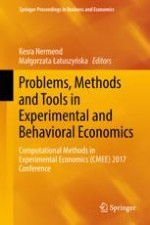2018 | OriginalPaper | Chapter
15. Wine Tasting: How Much Is the Contribution of the Olfaction?
Authors : Patrizia Cherubino, Giulia Cartocci, Enrica Modica, Dario Rossi, Marco Mancini, Arianna Trettel, Fabio Babiloni
Published in: Problems, Methods and Tools in Experimental and Behavioral Economics
Publisher: Springer International Publishing
Activate our intelligent search to find suitable subject content or patents.
Select sections of text to find matching patents with Artificial Intelligence. powered by
Select sections of text to find additional relevant content using AI-assisted search. powered by
